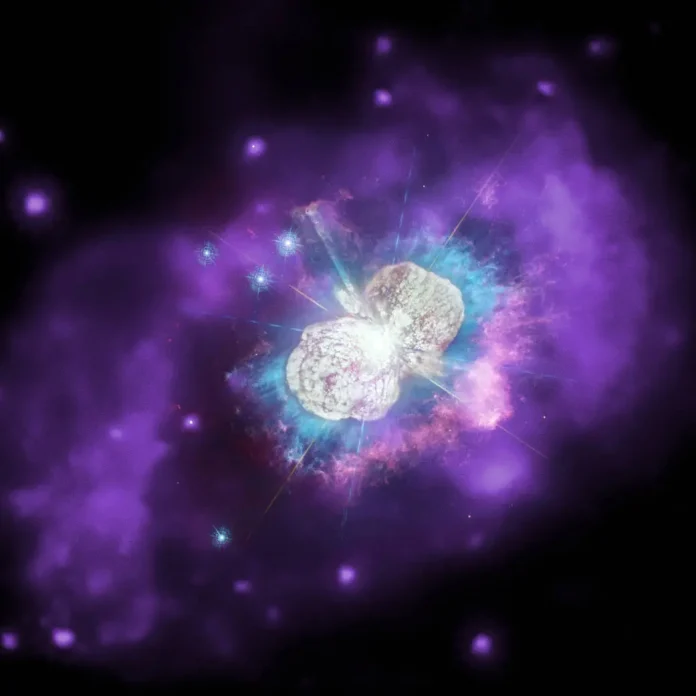
Scientists believe Eta Carinae, may be on the brink of a spectacular explosion. But what does this mean?
Eta Carinae is a system like no other, consisting of two massive stars locked in a close orbital dance, each roughly 100 times the mass of our Sun.
Eta Carinae: A volatile history
Eta Carinae has long captured the fascination of astronomers due to its tumultuous past. Approximately 170 years ago, it experienced a dramatic outburst that briefly made it one of the brightest stars visible in the southern sky. This event, known as the Great Eruption, ejected alot of material into space and shaped the intricate nebula surrounding the stars today.
Unraveling the mysteries
A recent image captured by the Hubble Space Telescope, complemented by ultraviolet data and X-ray emissions from the Chandra X-ray Observatory, offers a striking glimpse into the heart of Eta Carinae. The image reveals a complex structure: a ring of hot, X-ray emitting gas spanning about 2.3 light years, encircling the twin stars.
The central region of Eta Carinae is obscured by lanes of gas and dust, which absorb blue and ultraviolet light while allowing other wavelengths to pass through. This intricate web of material hints at the violent history and ongoing evolution of the star system.
Countdown to catastrophe?
Despite its volatile nature and massive size, astronomers remain uncertain about when Eta Carinae will meet its ultimate fate. It stands as a prime candidate for a supernova, an explosive event that could release as much energy in a few weeks as the Sun will emit over its entire lifetime.
The laser star mystery
Eta Carinae is the only star known to emit natural LASER light. This phenomenon occurs when specific conditions in the star’s environment amplify and align light waves into a powerful, coherent beam. The presence of LASER emissions highlights the unique and complex nature of Eta Carinae.
Looking ahead
As astronomers continue to monitor Eta Carinae closely, each new observation deepens our understanding of stellar evolution and the dynamics of massive star systems. The intricate details captured in the latest image highlight both the beauty and violence inherent in the cosmos.
In the meantime, the cosmic clock of Eta Carinae continues to tick.










